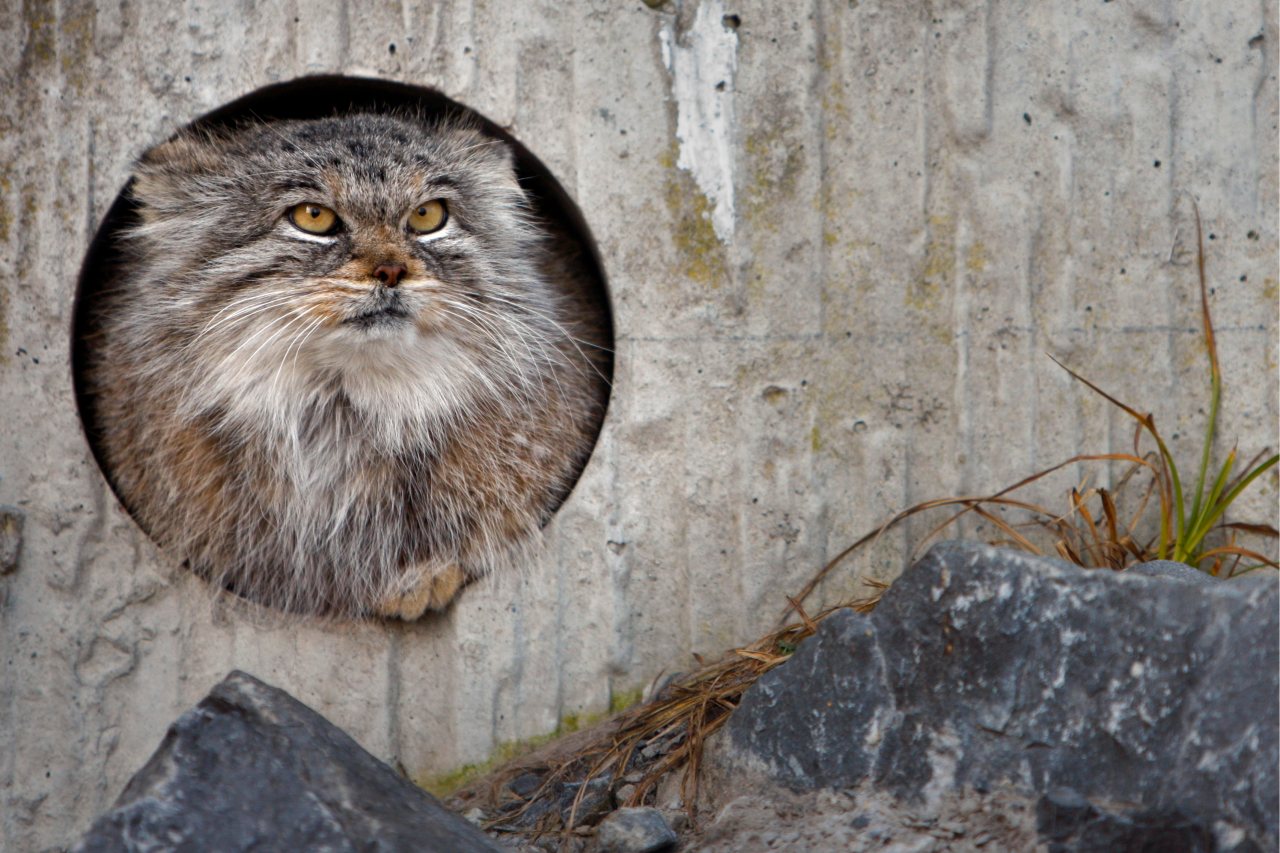SALT LAKE CITY, Utah (ABC4) – The Pallas’s cat, otherwise known as the Manul, Steppe cat, or Rock Wildcat, was the Salt Lake City area’s most-searched animal on Google in 2022.
These well-furred cats have stocky bodies with thick, soft fur and an “abundant dark, woolly underfur” that is double the length of that on the rest of the body, according to the International Society for Endangered Cats (ISEC). These cats come from the cold Asian Steppes, a belt of grassland that extends around 5,000 miles from Hungary in the west through Ukraine and Central Asia to Manchuria in the east, with mountain ranges dividing different regions within the Steppes, according to Encyclopedia Britannica.
Also the top trending animal in San Francisco for 2022, these cats have made waves across social media for their expressive faces, ultra-fluffy fur, and thick, bushy tails.
Their head is round and broad with scattered black spots on the forehead and two distinct parallel black bars on each cheek. The large, owl-like eyes are yellow, and the pupils contract into small circles instead of the usual vertical slits. The ears are short, rounded, and set low on the sides of the head.
While Mongolia, China, and Russia now make up the majority of their range, Mongolia is said to have the largest population of Pallas’s cats. These fluffy cats prefer valleys and rocky areas where they can find cover, and avoid completely open habitats, according to ISEC.
Though well adapted to their habitat, these cats look much heavier than they reportedly are, due to their stocky build and thick coat. Their tail is a sight to behold, as they wrap it around their body and even tend to use it as a pad on which to place their front paws.
They are able to easily climb rocky crevices and cliff faces, but reportedly hide for most of the day in caves or hollows under stones, or may even adopt the burrows of other animals like marmots or foxes.
Around 10 years ago, the Pallas’s Cat Working Group (PCWG) was founded as a network of around “30 members from range countries as well as international experts,” ISEC states. While there have reportedly been very few studies conducted about the Pallas’s cat, this group aims to increase Pallas’s cat studies and conservation all over its global range.
Additionally, in 2016, the Pallas’s cat International Conservation Alliance (PICA) was founded as a collaboration between the Royal Zoological Society of Scotland, Nordens Ark Zoo of Sweden and the Snow Leopard Trust, funded by Fondation Segré. PICA reportedly also aims to increase the knowledge of Pallas’s cats — in particular, their distribution and suitable survey techniques as well as their basic ecology. The alliance hopes to improve awareness and communication and develop a plan for conservation.
PICA states that of the 41 cat species 34 are considered “small cats,” many of which are threatened and lacking in knowledge and conservation action — the Pallas’s cat is no exception.
